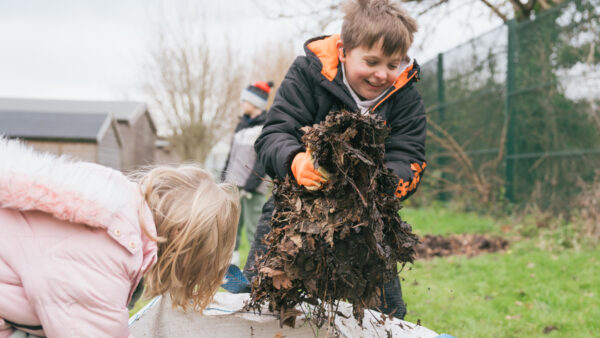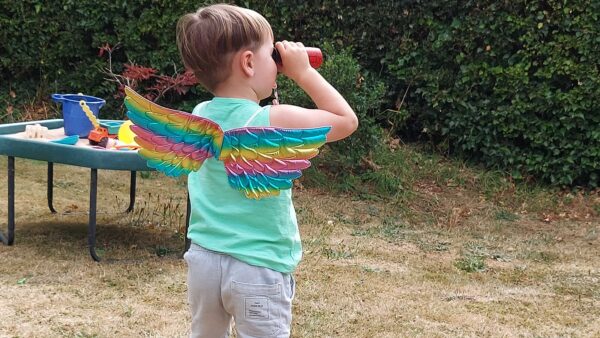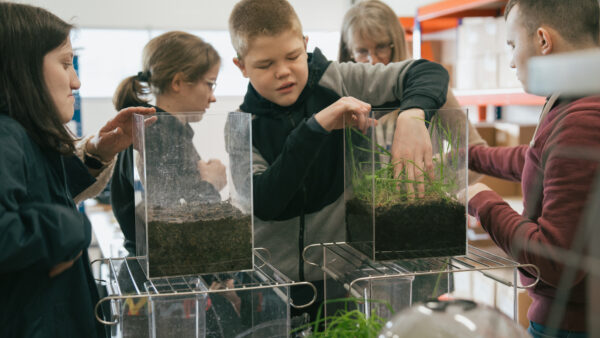Many of us are feeling anxious. Climate chaos is here and action is crucial to avert the worst consequences. Collective Climate Repair offers practical ways to work together to take positive action now. And it's really quite simple.
Floods, storms and droughts are reminding us daily that water is a sign of climate chaos, but the good news is that water is also our solution. Exciting new climate science shows how focusing on slowing and calming the water cycle gives us accessible routes to climate action that we can all be a part of.
Collective Climate Repair
Collective Climate Repair is a UK-wide project demonstrating how working with plants and natural systems offers accessible opportunities to cool and calm the climate. Funded by the National Lottery Community Fund, we are working in partnership with Edinburgh University, Trees for Cities, National Wildflower Centre and Scouse Flowerhouse and a wide network of community and environmental collaborators.
We are working with communities across the country to develop, test and implement water-based techniques to cool and calm our climate. Simple actions include growing areas of longer grass, sowing wildflowers, planting trees, adding rain chains and creating wetland areas. Our design challenge is to create solutions that are great however small your space and budget.
Our focus is collective action so everyone can contribute, join our Collective Climate Repair mailing list to keep in the loop.
Collective action
We are putting equity and collective action at the heart of climate repair. We believe that diversity of lived experience and working together are key to finding effective solutions that everyone can engage in.
Breaking the barriers that prevent people from understanding and engaging in climate repair relies on three key actions.
- Making the science understandable and accessible. The narrative around climate change is often complex with a tendency towards jargon and scientific terminology.
- Creating climate information in alternative primary languages. We believe everyone should have access to climate science information in a format that suits them. We will be actively supporting British Sign Language (BSL), braille and symbol communication methods.
- Working in collaboration. We will be working closely with people who are D/deaf, blind and partially sighted and neurodivergent, and with partners at the University of Edinburgh, Trees for Cities and National Wildflower Centre, to demonstrate and implement practical interventions for climate change.
Behind the science
Floods and droughts remind us daily that water is at the heart of climate chaos, but the good news is that water is also our solution. The actions are simple. The result is a healthy planet and more natural beauty in the world.
In simple terms, climate change comes from the warming of the planet and water is central for cooling and repair. The central issue is that the water cycle is out of balance. As a result, water patterns are erratic. Like carbon, water is safer and most useful below ground so the main challenge is to keep rainwater in the land and repair the water retaining capacity of soil and landscapes. Rising temperatures are putting more water in the atmosphere causing the water to behave as a greenhouse gas, trapping heat. We are feeling these impacts through worsening floods and droughts.
Emerging science shows that a focus on water, in addition to carbon opens new routes to climate action that are cheaper, faster and more widely adoptable. The key to this is helping water to soak in slowly to the lower ground. We need to work with nature to cool and calm, and re-balance the water cycle. COP26 called to put water central to climate action and ensure participation by people not currently engaged. By focusing on water, scientists believe that real change is possible within a decade.
The good news is that water is not just the problem, it's also the solution. Scientists believe that real change is possible within a decade.

Biodiversity holds the key
Solutions to climate change rely on biodiversity. The two are linked and cannot be separated.
Biodiversity is a climate regulator. Plants in particular, cool us, capture greenhouse gases and key players in the water cycle. Natural systems know how to respond to climate change. They are showing us all the time. It's time to work with nature to heal our planet.
For example, every day plants are working to:
- slow water down - the slower the flow, the more chance of it reaching the lower ground store, where we need it.
- cool the ground by creating shade.
- cool the air by transpiration.
Every day plants are taking climate action, this is our chance to join them.
Every metre counts when it comes to biodiversity.




